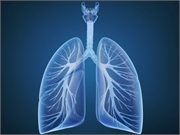Architectural distortion, traction bronchiectasis, CT involvement score aid in assessing disease severity
WEDNESDAY, March 11, 2020 (HealthDay News) — Typical imaging features can be useful in early screening for coronavirus disease 2019 (COVID-19), according to a study published online March 3 in the American Journal of Roentgenology.
Wei Zhao, from The Second Xiangya Hospital in Changsha, China, and colleagues retrospectively collected data on 101 cases of COVID-19 pneumonia from four institutions in Hunan, China. Basic clinical characteristics and detailed imaging features were assessed and compared for patients with nonemergency (mild or common disease) and emergency (severe or fatal disease) status.
The researchers found that 78.2 percent of patients had fever as the onset symptom. Typical imaging features, such as ground-glass opacities (86.1 percent) or mixed ground-glass opacities and consolidation (64.4 percent), vascular enlargement in the lesion (71.3 percent), and traction bronchiectasis (52.5 percent) were seen in most patients with COVID-19 pneumonia. Lesions present on computed tomography (CT) images were more likely to have peripheral distribution, have bilateral involvement, be lower-lung predominant, and be multifocal (87.1, 82.2, 54.5, and 54.5 percent, respectively). Patients were older in the emergency versus nonemergency group. Evaluation of the severity and extent of the disease was aided by architectural distortion, traction bronchiectasis, and CT involvement score.
“Architectural distortion, traction bronchiectasis, and pleural effusions, which may reflect the viral load and virulence of COVID-19, were statistically different between the two groups and may help us to identify the emergency type disease,” the authors write.
Copyright © 2020 HealthDay. All rights reserved.








